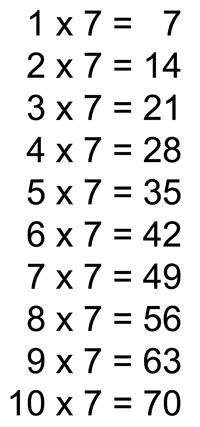So let’s put this debate to rest before we even start, gif or jif? Gif pronunciation is “gif” like “gift” not “jif” like "Jiffy" peanut butter. However, the inventor of the Graphics Interchange Format (GIF), Steve Wilhite, may disagree with you on that. But despite your pronunciation, this expressive bit of looping visual data has truly lasted as a medium all on its own. We knew they were useful for social media posts and quirky pop culture references, but what are their benefits in the learning environment? And, perhaps a better question: are you using them in your content? Surprisingly, there are numerous, diverse benefits to GIFs. So let's break them down.
Benefits of Learning Gifs
Benefit #1: Addressing goldfish-like attention spans
We all know technology brings so much to education, but it is also blamed for the ever-decreasing attention span of younger students. According to the eLearning Industry, “the average attention span of the Millennial generation is 90 seconds.” Another study is even less positive, saying that as a society our attention spans have dropped to a mere eight seconds before losing interest. Such negative feedback has been the root of discussion for conversations around standardized testing and other in-class assessment methods. But the GIF is technology's response. As we condense information and search for the right length of video content to insert in our digital material, GIFs allow teachers to present quick information on repeat (perhaps even leaving it on in the background of their lecture to stick in students' minds).
 If you want to engage students, you need to meet them where they "read." The ever-popular site BuzzFeed generates 200+ million monthly unique views, with 50% of their audience between the ages of 18-34. Like it or not, the younger generation absorbs information differently. Our task is to evolve with them, not force them into older ways of content retention.
If you want to engage students, you need to meet them where they "read." The ever-popular site BuzzFeed generates 200+ million monthly unique views, with 50% of their audience between the ages of 18-34. Like it or not, the younger generation absorbs information differently. Our task is to evolve with them, not force them into older ways of content retention.
Benefit #3: Lather, rinse, repeat
 The power of repetition remains steadfast in the classroom. The beauty of GIFs lies in their looping ability, their attention-grabbing presence, and their ability to be absorbed even when in the periphery of your eye. According to the Professional Learning Board, learning by repetition really is just like riding a bike. "Every time the child rides [a bike], the skill is reinforced. Even years later, with no additional riding experience, it is possible for a person to get on a bike and ride because it was so firmly encoded in the brain. This is the power of learning by repetition."
The power of repetition remains steadfast in the classroom. The beauty of GIFs lies in their looping ability, their attention-grabbing presence, and their ability to be absorbed even when in the periphery of your eye. According to the Professional Learning Board, learning by repetition really is just like riding a bike. "Every time the child rides [a bike], the skill is reinforced. Even years later, with no additional riding experience, it is possible for a person to get on a bike and ride because it was so firmly encoded in the brain. This is the power of learning by repetition."
Benefit #4: Microlearning at its finest
Whether you are in education or corporate training, microlearning is becoming a buzz word that is hard to avoid. According to the eLearning Industry, "microlearning is a way of teaching and delivering content to learners in small, very specific bursts. The learners are in control of what and when they’re learning." So whether they are repetitive GIFs of step-by-step instructions on how to perform a task, or they are sequencing tools that allow students to absorb a concept quickly and easily, microlearning with GIFs could change the way we conceive learning in a digital age.
Benefit #5: The ease of GIF creation/management
As content creators, your primary concern may revolve around copyright issues. As large companies like GIPHY and Imgur can attest, copyright law has been slow to catch up to this medium. Though all visuals and graphic content should always be run by permissions teams, according to Fortune, GIFs are usually treated the same way you would treat fair use – as a short snippet of content that needs no payment for permissions due to its use in the education field, even in a commercial product. But you may have just as much use for GIF-ifying your own video content than you would using other permissionable video content.
So you’re clear to create your educational GIF, but how exactly do you do it? Here are a few sites to visit or some step-by-step instructions on how to create one from scratch.
Once your GIF has been created, you need to make sure it will render appropriately in your product. MyEcontentFactory easily renders the .gif format as well as other audio/visual file types including .jpg, .png, .pdf, .ai, .mp3, .mp4, .mov, and more. Preview before you publish and manage files in a single media library where you can use and reuse GIFs across multiple projects.
Looking to start GIF-ifying your content? Start adding GIF files to your content today with a free trial!
By Scott Greenan
How would you use GIFs in your educational content? Share some best practices in the comments below!








Leave a comment